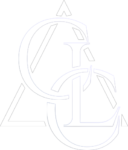Now that you have a basic understanding of blockchain, cryptocurrency, and the concept of fungibility, you can delve into non-fungible tokens or NFTs. Simply put, NFTs are digital assets representing real-world objects like art, music, in-game items, and videos. They can also represent contracts for tangible assets such as real estate. For instance, by holding an NFT, you could technically own a house, with the NFT serving as proof of ownership in the digital world.
NFTs are usually bought and sold online with cryptocurrencies.
As of May 2023, Ethereum network dominates the NFT trading volume with an 80% market share but in terms of NFT sales, Ethereum’s share is only 5.7%. In contrast, Polygon has emerged as a strong player, capturing 27% of NFT sales and its success can be attributed to its scalability and low-cost transactions.
Among the NFT marketplaces, Blur maintains a 65% market share and generated $442 million in sales, while OpenSea holds a 27% market share with $183 million in revenue. However, OpenSea has a larger number of traders at 377,087 compared to Blur’s 36,673, indicating a significant difference in user base.
NFTs are typically encoded with the ERC-721 standard, a unique characteristic of Ethereum’s blockchain technology, which enables the creation of these non-fungible tokens. Simply put, ERC-721 is a rule that Ethereum follows to make sure each NFT is one-of-a-kind. This aspect distinguishes NFTs from fungible tokens like Bitcoin or Ethereum itself, which are interchangeable and don’t possess the unique attributes of NFTs.
This means NFTs can represent ownership over a unique item or piece of content, and this is where it gets exciting, as this opens up numerous possibilities in art, collectibles, real estate, and more.
However, an essential aspect to remember about NFTs is that the specifics of what they represent are defined in a smart contract. This is an immutable digital agreement that is stored on the blockchain. The smart contract details what owning the NFT means – whether it’s ownership of a physical item, a digital item, specific rights to a piece of content, or something else.
For instance, you might hold an NFT tied to a Van Gogh painting, but that doesn’t mean you own the actual painting itself. What you own is defined in the smart contract linked to that NFT. The contract may specify that you own the physical painting, a digital representation of it, or some rights related to it. This contract can’t be changed once it’s created, providing a measure of security and certainty.
This contract system becomes even more important when considering NFT collections, such as digital collectible cards. In this scenario, a single smart contract typically governs the entire collection, specifying the attributes and ownership details for each card within the set.




